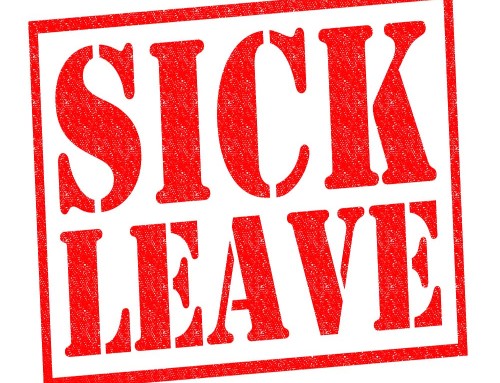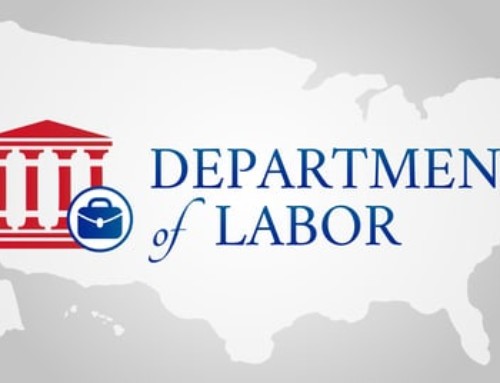Late Wednesday night President Trump signed the Families First Coronavirus Response Act (FFCRA) into law. This $100 billion Act becomes effective fifteen (15) days from signing, and contains two provisions that provide paid leave to employees who are forced to miss work as a result of the COVID-19 outbreak: The Emergency Family and Medical Leave Expansion Act (EFMLEA) and the Emergency Paid Sick Leave Act (EPSLA). Both the EFMLEA and EPSLA apply to all government employers and private employers with fewer than 500 employees.
The Emergency FMLA Expansion Act temporarily expands FMLA protections to employees on a temporary basis through the end of 2020. The Act also reduces the eligibility requirement to employees who have been employed for at least thirty (30) calendar days (before the first day of leave). Under the expanded FMLA leave entitlements, an employer must allow 12 weeks of FMLA leave to an employee if the employee is unable to work (or telework) to care for a child under eighteen (18) years of age if the school or place of care has been closed, or the child care provider for such child is unavailable due to a “public health emergency.” The term “public heath emergency” is defined as an emergency with respect to COVID-19 declared by a Federal, State or local authority. The first ten (10) days of FMLA leave under the new provision would consist of unpaid leave (an employee may choose to substitute accrued annual or sick leave during this period) and the remaining time must be paid at two-thirds of the employee’s regular pay rate. The Act includes a cap of $200 a day and $10,000 in the aggregate. Unlike traditional FMLA benefits, the closure of the child’s school or loss of childcare is the only reason allowed under the added FMLA provision, and the only reason allowed for paid leave under the FMLA.
The Emergency Sick Leave Act provides for up to eighty (80) hours of paid sick leave for full time employees who are unable to work (or telework) in the following circumstances:
1) The employee is subject to a Federal, State, or local quarantine or isolation order related to COVID-19;
2) The employee has been advised by a health care provider to self-quarantine due to concerns related to COVID-19;
3) The employee is seeking a medical diagnosis or care because they are experiencing symptoms of COVID-19;
4) The employee is caring for an individual who is self-isolating because the family member has been diagnosed with COVID-19; or such individual has been advised by a health care provider to self-quarantine due to concerns related to COVID-19 (note: no longer limited to just family members);
5) The employee is caring for their son or daughter if the school or place of care of such child has been closed, or the child care provider of the child is unavailable due to COVID-19; or
6) The employee is experiencing any other substantially similar condition specified by the Secretary of Health and Human Services in consultation with the Secretary of the Treasury and the Secretary of Labor.
Paid sick leave is available immediately (no waiting period or accrual) and must be provided at the employee’s regular pay rate, unless taken for qualifying reasons 4 and 5 listed above, in which case sick leave would be paid at two-thirds of the employee’s regular pay rate. As with the EFMLEA provisions, the paid sick leave is capped ($511 per day and $5,110 in the aggregate for reasons 1-3, and $200 per day and $2,000 in the aggregate for reasons 4-6). The paid sick leave will not carry over to the following year and is in addition to any paid sick leave currently provided by the employer. The Act allows an employer of certain health care providers and emergency responders to elect to exclude the employee from the application of these two provisions. Additionally, both provisions allow for subsequent U.S. Department of Labor regulations exempting businesses with fewer than fifty (50) employees where the requirement would jeopardize the viability of the business.
The Act does provide for job protection, however the FMLA’s requirement that the employee be restored to the same or equivalent position following his or her leave does not apply to an employer with fewer than 25 employees or if the position no longer exists due to economic circumstances or changes in the employer’s operations caused by the public health emergency.
The Department of Labor (DOL) has issued its own guidance for employers: Families First Coronavirus Response Act: Employer Paid Leave Requirements. In its guidance the DOL says it will provide a model notice for employers to post to make employees aware of the new benefits, on or before March 25, 2020. With respect to the regulations, no specific date is provided. The notice just says April, 2020.
We will continue to keep you posted on this and other legal updates involving the COVID-19 outbreak and the local and national response. We recognize this is a rapidly evolving situation and that new questions and developments arise on a daily basis. Your team at NMP is available to respond to your COVID-19 related labor and employment questions on an expedited basis.






